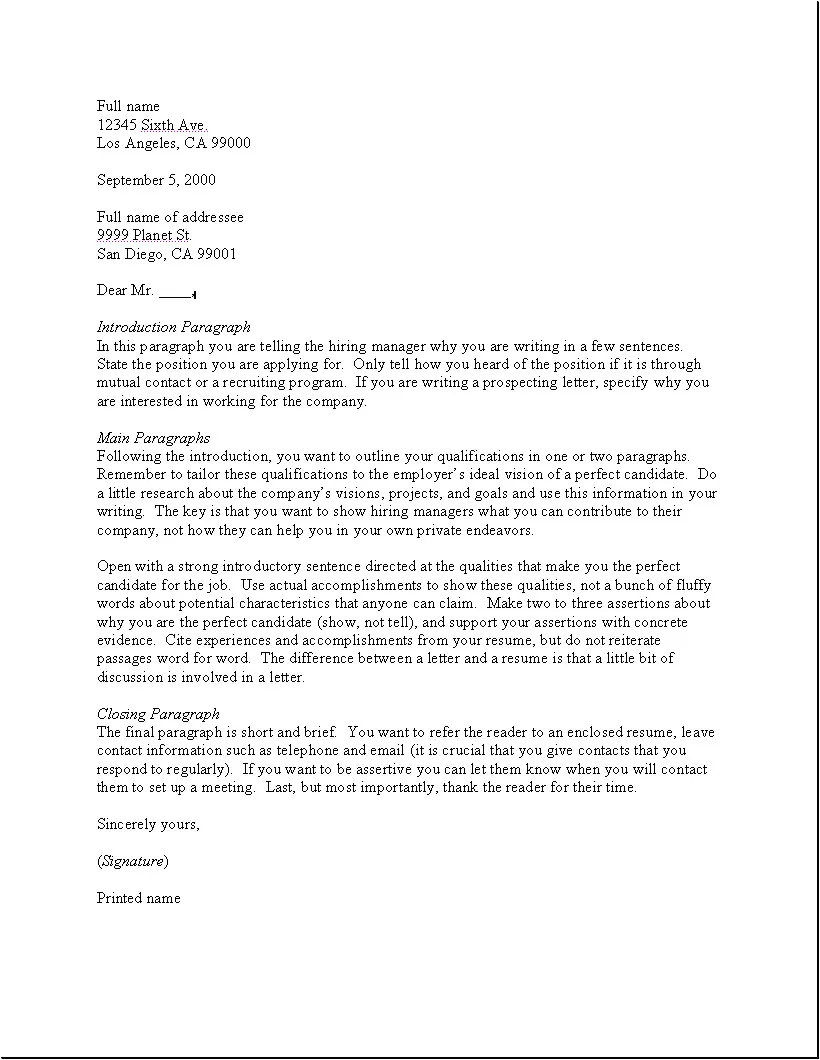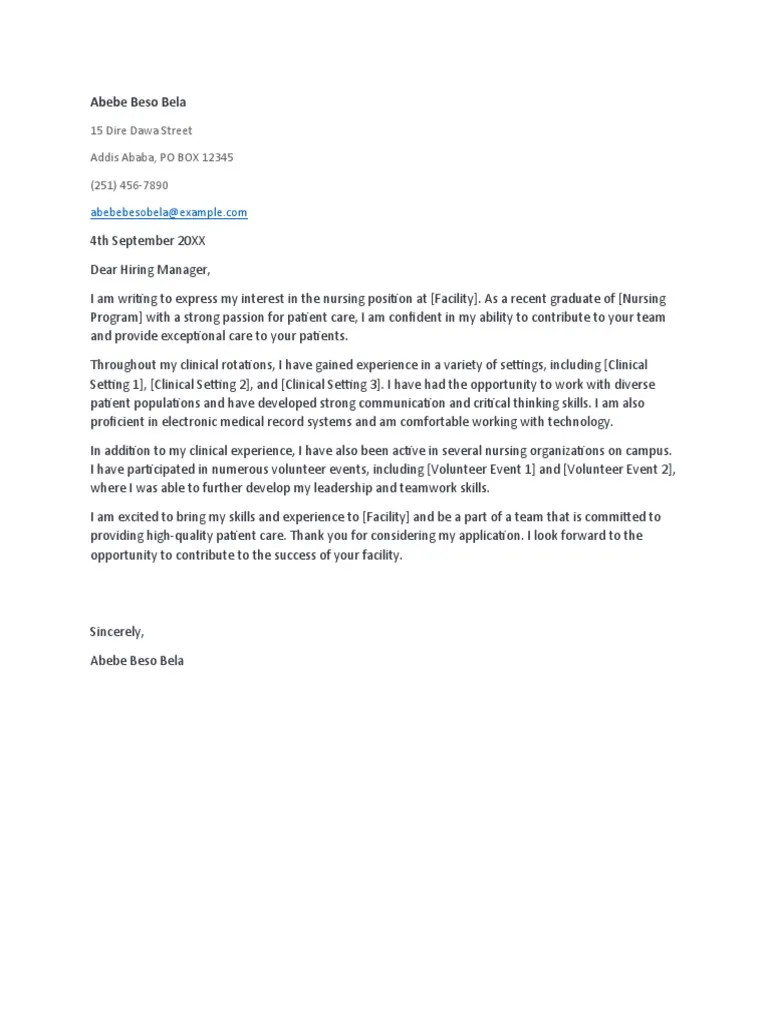What is a Cover Letter and Why is it Important?
A cover letter is a crucial document that accompanies your CV or resume when you apply for a job It serves as your first introduction to a potential employer and provides you with the opportunity to showcase your personality, express your interest in the specific role, and highlight why you are the ideal candidate Unlike a CV which focuses on your skills and experience, a cover letter allows you to explain how these skills and experiences align with the job requirements and the company’s values Essentially, it is your chance to make a strong first impression and set yourself apart from other applicants who may have similar qualifications.
The importance of a cover letter cannot be overstated It’s not just a formality it’s a strategic tool that can significantly increase your chances of getting an interview Hiring managers often use cover letters to gauge your communication skills, assess your level of interest in the position, and determine whether you have taken the time to understand the company and the role A well-crafted cover letter demonstrates professionalism, attention to detail, and a genuine enthusiasm for the opportunity that goes beyond your qualifications
The Key Components of a Cover Letter
A compelling cover letter typically consists of several key components that work together to create a persuasive narrative First and foremost is your contact information This section includes your name, address, phone number, and email address, ensuring the hiring manager can easily reach you Next comes the salutation, where you address the recipient properly It is always best to address your letter to a specific person, when possible. The opening paragraph is your chance to grab the reader’s attention, express your interest in the position, and briefly mention how you learned about the job.
The body of the cover letter is where you elaborate on your qualifications, highlight your skills and experience, and provide specific examples of your achievements You should tailor this section to the specific requirements of the job, demonstrating how your skills align with the company’s needs Finally, the closing paragraph reiterates your interest, thanks the reader for their time and consideration, and includes a call to action, such as expressing your eagerness to discuss the opportunity further and providing an easy way to contact you. Make sure to check the email address on file
Contact Information and Salutation

Start your cover letter by providing your contact information This should include your full name, address, phone number, and professional email address Ensure your email address sounds professional and is appropriate for a job application Next, address the letter to a specific person whenever possible, such as the hiring manager or the recruiter If you cannot find a name, use a general salutation, such as “Dear Hiring Manager” or “Dear [Company Name] Team” Avoid generic greetings like “To Whom It May Concern,” as they can come across as impersonal.
Crafting a Compelling Opening Paragraph
The opening paragraph is your first opportunity to capture the reader’s attention and make a strong impression. Begin by expressing your interest in the specific position and the company Briefly mention where you saw the job posting and why you are interested in the role Use this paragraph to highlight your relevant skills or experiences that align with the job requirements Aim to create an immediate connection and make the reader want to learn more about you. The initial paragraph is your opening to create a positive relationship with the reader.
Highlighting Your Skills and Experience
In the body of your cover letter, provide specific examples of your skills and experiences that are relevant to the job description. Instead of simply listing your qualifications, use this section to tell a story and illustrate how you have applied your skills in the past to achieve positive outcomes. Quantify your achievements whenever possible, using numbers and data to demonstrate the impact you have made. Make sure that the skills and experience you mention align with what the employer is looking for in their next hire. Be sure to always keep the employer’s needs at the forefront.
Showcasing Your Achievements

Go beyond simply listing your job responsibilities Showcase your achievements by providing specific examples of how you have excelled in previous roles. Use the STAR method (Situation, Task, Action, Result) to structure your examples, providing context, describing the challenge you faced, outlining the steps you took, and highlighting the positive outcome you achieved. By providing concrete evidence of your accomplishments, you can demonstrate your value to the employer and make a compelling case for why you are the right fit for the job. The details you include should leave the employer wanting to meet you.
Tailoring Your Cover Letter to the Job
One of the most critical steps in writing a successful cover letter is tailoring it to the specific job and company. Carefully review the job description and identify the key skills, qualifications, and requirements. Customize your cover letter to address these specific points, highlighting how your skills and experiences align with what the employer is looking for. Research the company’s mission, values, and culture, and use this information to demonstrate your understanding of their needs and your genuine interest in the opportunity A generic cover letter will not make a positive impact on the recruiter.
Using Keywords Effectively
To maximize your chances of getting noticed, incorporate keywords from the job description throughout your cover letter and CV. Identify the most important terms and phrases used in the job posting and weave them naturally into your writing. This will help your application pass through applicant tracking systems (ATS) and ensure that your cover letter is aligned with the employer’s needs. However, avoid keyword stuffing, as this can make your writing sound unnatural and detract from your message. Make it clear to the employer that you have the required skills they are looking for.
The Importance of Proofreading

Before submitting your cover letter and CV, always proofread both documents carefully. Errors in grammar, spelling, and punctuation can create a negative impression and undermine your credibility. Read your documents multiple times, ideally after taking a break. Use a grammar and spell checker, but don’t rely on them completely. Ask a friend or family member to review your documents as a second pair of eyes can catch errors you may have missed. A polished, error-free cover letter and CV demonstrate professionalism and attention to detail.
Structuring Your CV for Maximum Impact
Your CV is a detailed account of your professional and academic history. Structuring it effectively is crucial to make it easy for recruiters and hiring managers to quickly understand your qualifications. Begin with a clear and concise summary or professional profile, highlighting your key skills and experience. Then, list your work experience in reverse chronological order, including your job title, company name, dates of employment, and a brief description of your responsibilities and achievements. Include an education section, listing your degrees, certifications, and relevant coursework.
What to Include in Your CV
When deciding what to include in your CV, focus on the information that is most relevant to the job you are applying for. Highlight your skills and experience that align with the job requirements, using keywords from the job description. Include your contact information, work experience, education, and any relevant certifications or awards. You can also include sections for skills, volunteer work, or projects, if they are relevant to the position. Tailor your CV to each job application, emphasizing the experience and skills that are most important to the employer.
Formatting Your CV

The formatting of your CV is just as important as the content. Use a clear and consistent format that is easy to read and visually appealing. Choose a professional font, such as Arial, Calibri, or Times New Roman, and use a font size that is easy to read (11-12 points). Use headings, bullet points, and white space to organize your information and make it scannable. Avoid using overly complex designs or graphics that could distract from your content. Ensure your CV is well-organized and easy to navigate for the reader. This is key to making a positive impression on the hiring manager.
Tips for Standing Out From the Crowd
To make your cover letter and CV stand out, go the extra mile and tailor them to the specific job and company Research the company and demonstrate your understanding of their mission, values, and culture. Highlight your unique skills and experiences, and provide specific examples of your achievements. Consider using a professional design template for your CV to make it visually appealing. Proofread everything carefully, and ask for feedback from trusted sources. By taking these extra steps, you can increase your chances of getting noticed and landing an interview.
